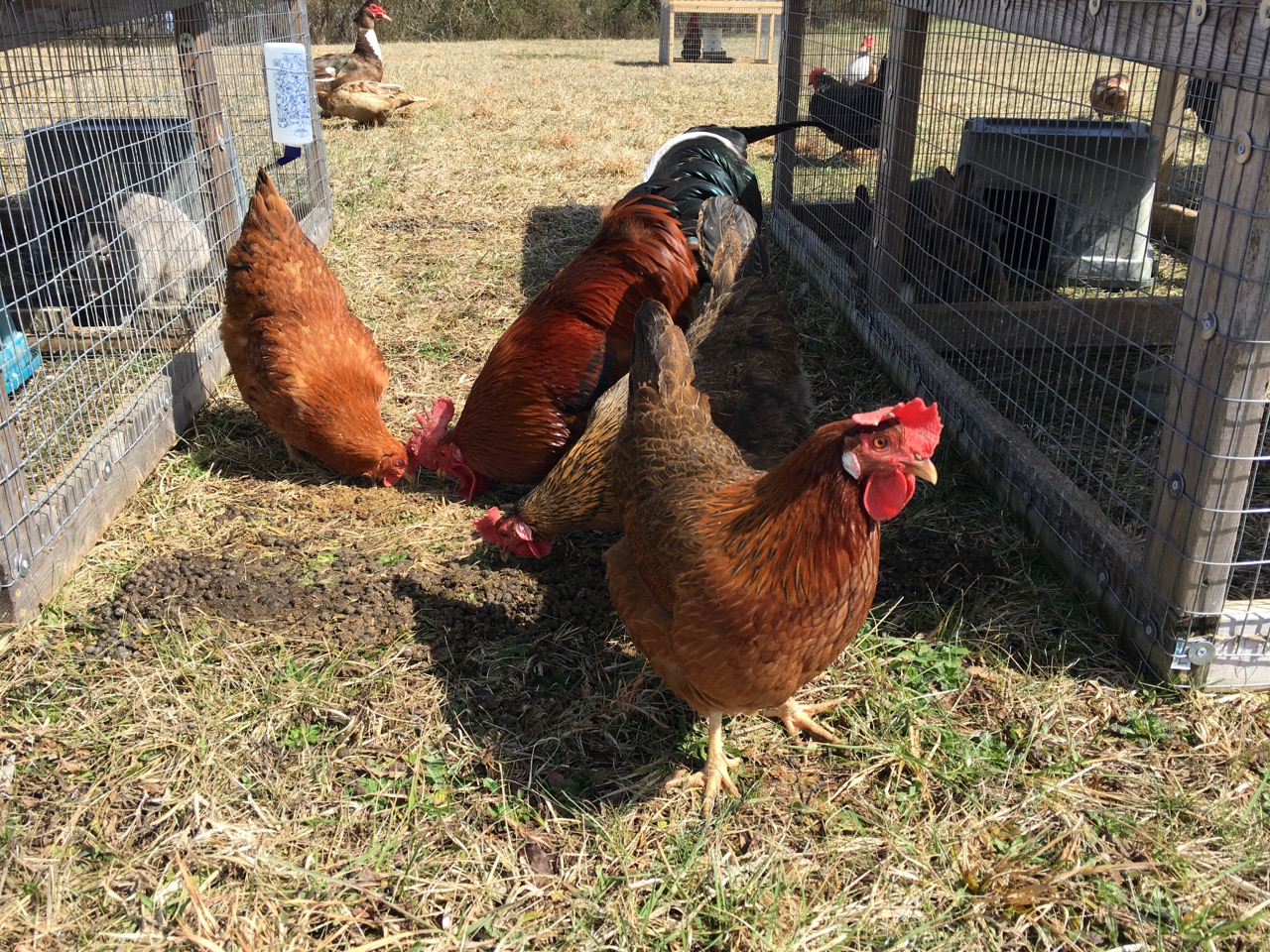
One of the best things about living on a farm is being able to turn on the ever-entertaining and variety-filled “chicken and duck” (and rabbit) channel. You never know what you’re going to see!
This past winter, we spent a lot of time with the chickens and ducks lately after finishing up morning chores because that seemed to be when the hawks most commonly appeared. While it’s within the realm of possibility for a hawk to swoop down and grab a chicken and duck right in front of a farmer, the hawks like to hunt when people or other livestock guardians aren’t around. Why? Because they’re opportunists: they want an easy meal with low risk of injury to themselves. Unfortunately, a young, inattentive chicken fits the bill.
To deter these aerial hunters, we station ourselves around the coops and walk around, talk, and generally make ourselves seen. A hawk even landed on the ground near a coop when we were over by the rabbit tractors (where it couldn’t see us) and it couldn’t get airborne and away from us fast enough when we came around the corner. All we saw was ducks and chickens flapping away from the hawk, and the hawk flying away from us. It didn’t return that day. They’re smart creatures, and a brush with humans is not to their liking.
While we try to bear in mind that hawks are just hungry animals that need to eat – like everyone else does – it really chaps our hide when a hawk preys on our animals; sometimes, they kill the really “special” ones, like Coraline. While it’s a painful experience, we understand that it’s an ever-present risk because we choose to let the chickens and ducks free range. The trade-off to their ability to choose where they go within the fenced pasture and where they want to forage each day is that they have to be vigilant about watching for predators like loose dogs, hawks, and foxes, to name a few.
Watching the chickens and ducks go about their daily activities is a great educational experience. Watching their social interaction is especially interesting; for Muscovies, there’s a lot of head-bobbing and hissing by the drakes and trilling and low quacks by the ducks. The Runner/Pekin group goes everywhere together, and the ducks quack loudly to sound the alarm when they see something. The chickens run everywhere and watching them run is very entertaining. If you’ve never seen a chicken run, you really must – it’s not graceful, but it hints at their dinosaur ancestors.
When we walk around the property, the ducks and chickens follow us. They’re curious and probably hoping we have a treat to throw their way. Even when they realize we don’t always have treats, they’ll forage near where we are, and the ducks will nibble on things we bring with us, like chairs or buckets. We think they nibble on objects to give them a better idea of what it is (and whether it’s edible, of course). It’s pretty funny to hear them “drumming” on a bucket lid.
It’s fascinating to just observe the world of the chickens and ducks: how the roosters will sound an alarm – a guttural sound similar to a growl – when they see birds (even harmless vultures, starlings, geese, and mockingbirds) flying overhead; how the ducks will dip tough pineapple rinds into their pools to try to “soften” them up (it doesn’t work); how hens in nest boxes will squawk in an unmistakably annoyed way when another hen walks by the occupied nest box (or worse yet, when she decides to also get into that same nest box); and how ducks immediately crowd around a newly-filled pool and make their happy duck noises (sounds that are guaranteed to make the observer smile).
Watching the animals just living their daily lives helps puts life into perspective; after all, it really is ultimately about making the most of your time on this planet. Appreciating the ordinary and living in the present helps us remain grounded. Wouldn’t life be that much sweeter if the small, mundane things made us happy?
